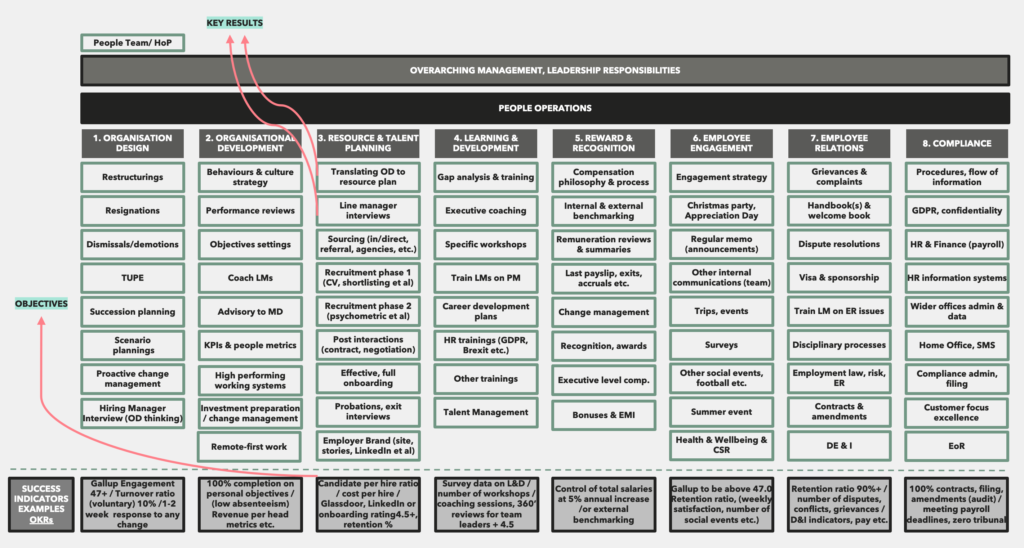BEING DYNAMIC WITHIN A CONSISTENT STRUCTURE
It was my first day as a fresh Management Consultant at PwC when my Manager told me their number one advice “look, it is all about structure, structure, structure”. It sort of made sense to me in the business world given I was working with numbers, diagrams various analysis and presentations 24/7. It was pretty much science and ‘structure’ as key word of advice felt appropriate.
Later, when I started kicking off my career and education in HR I remember I felt somewhat confused as HR felt often binary – either intangible, ‘fluffy’ (the biased feedback we often receive people professionals) people topics or hardcore employment law and key metrics. And then my structured PwC and Economics-trained mind was struggling to conceptualise the entire HR/People space in one consistent format. Is it possible to provide a structure and measure success in such complexity? How can I address the board or investors talking about the opposite spectrum of things with credibility?
I have always seen genuine (almost-equal) value in both facilitation, empathy, DE&I, developing others (‘art’) as well as retention rates, succession, key HR data and compliance (‘science’) and I was aspired to represent both as a People leader in a balanced way. Art & Science holding hands can serve our teams best – sounds cheesy I know but I believe in this.
I have found a structure and a way to illustrate the 8 key pillars (OD, OE, L&D, Engagement, Talent, ER, Reward & Recognition, Compliance) of People and all possible initiatives under each professional area (CIPD can very handy here!). I also set key results under each professional area which then contributed to my objectives #OKRs. The other, commonly-used ‘lag and lead KPI’ way of setting company goals (if not OKRs) can also be translated to this 8-pillar model so the People function can work effectively and jointly with the wider business. The model with some simple colour-coding enabled effective project management and consistent visibility of progress and iterations on one page.
However, constantly revisiting the structure and model was also key as the people space is very dynamic. The people function is all about agile product development. I share the view that we should look at employees like customers who can anytime leave the business, our culture (= product) and unsubscribe, free of charge. We are responsible to constantly revisit what initiatives we bring under each professional area to make sure our employees are happy and feel included. This was my (personal) ultimate objective which I measured with the Gallup engagement score (targeting 48+). But… to get there we needed to hit our key results under each (8) professional area.




